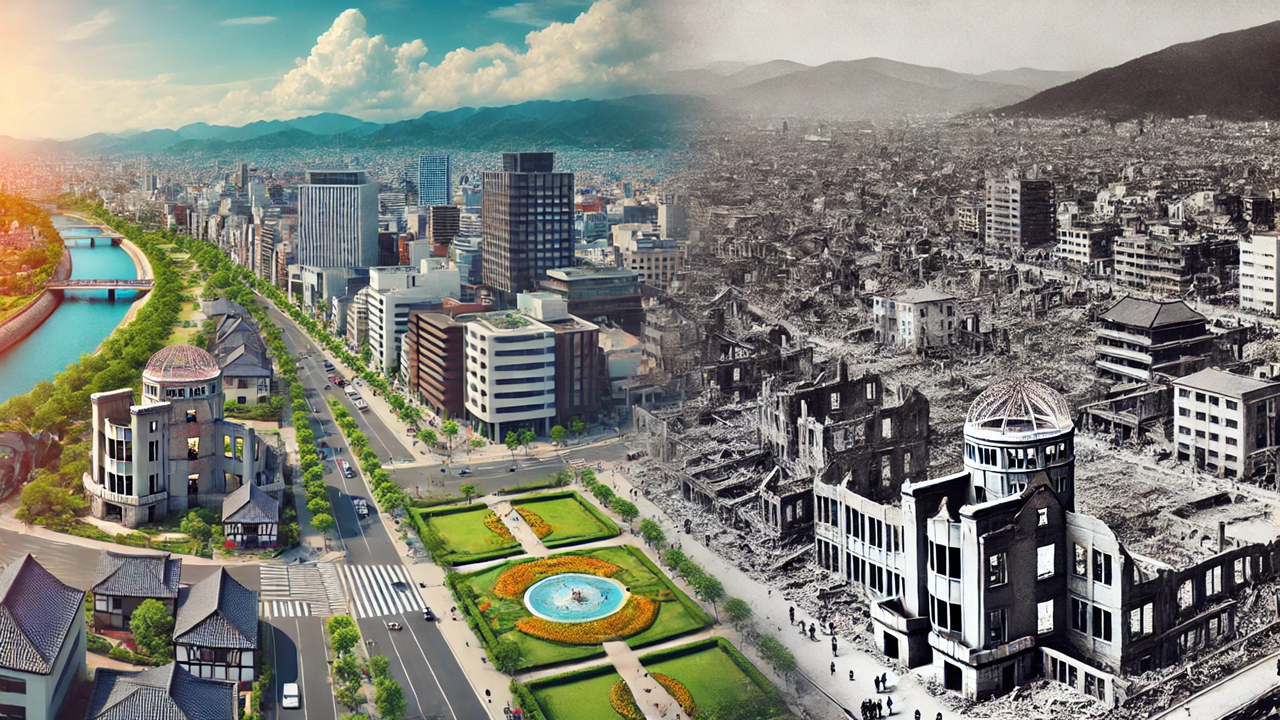Rising from the Ashes: Hiroshima’s Blueprint for Urban Resilience
The World Bank's report, "Overcoming Multiple Urban Crises: Lessons from the Reconstruction of Hiroshima," offers a comprehensive analysis of Hiroshima’s recovery post-World War II, highlighting key strategies and lessons that modern cities can adopt to navigate crises.

In today's rapidly evolving world, cities face a multitude of crises, from natural disasters to economic downturns and social upheavals. The World Bank's recent report, "Overcoming Multiple Urban Crises: Lessons from the Reconstruction of Hiroshima," sheds light on how Hiroshima’s post-war recovery provides timeless lessons for urban resilience and sustainable development.
A City in Ruins
On August 6, 1945, Hiroshima was reduced to rubble by the atomic bomb, leaving the city in dire straits. With 90% of the city center obliterated and over 140,000 lives lost by the end of the year, Hiroshima’s recovery seemed insurmountable. The city’s immediate challenges included widespread destruction, radiation concerns, food shortages, and housing crises.
The initial emergency response was a testament to human resilience. Surviving officials and citizens improvised solutions to provide food, first aid, and shelter. Despite the devastation, critical infrastructure such as electricity and transportation was restored in phases, leveraging surviving facilities and available resources.
Navigating the Medium Term
The national government played a crucial role in Hiroshima's medium-term recovery by issuing subsidies for essential services. The focus was on burial services, debris removal, and the restoration of water and sewer systems. Housing was a significant concern, with many survivors left to find their shelter. Over time, temporary housing solutions were implemented, followed by public affordable housing developments.
Restoration efforts extended to the banking sector, allowing local businesses and residents to access financial services necessary for rebuilding. Education also saw a grassroots revival, with communities organizing to support the reopening of schools.
Long-Term Reconstruction: A Vision for the Future
Planning for Hiroshima’s long-term reconstruction began amidst the emergency response phase. The national government’s War Reconstruction Institute set the framework, while the city and prefectural governments implemented detailed plans. These plans included extensive damage assessments, city planning, and financial arrangements.
Securing funding for reconstruction posed a significant challenge. Hiroshima's leaders successfully advocated for special budgetary treatment, piecing together funds from national subsidies, local revenues, and international aid. This diverse financing approach was crucial in sustaining long-term recovery efforts.
Housing recovery was a multi-decade endeavor, focusing first on temporary shelters and gradually transitioning to permanent public housing. Urban redevelopment continued through the 1960s and 1970s, with the city's population quadrupling within 25 years of the bombing.
Lessons in Urban Resilience
Hiroshima’s story is not just one of rebuilding but of transformation. The city’s leaders prioritized the early restoration of critical infrastructure and staged the recovery process meticulously. Effective prioritization ensured limited resources were used efficiently, addressing immediate needs while planning for long-term solutions.
Diverse financing sources were essential in overcoming budget constraints, highlighting the importance of multi-faceted funding strategies in urban recovery. Early and visionary planning, coupled with strong political will, drove the long reconstruction process, demonstrating that sustained commitment is key to urban regeneration.
Inclusive rebuilding was another cornerstone of Hiroshima’s recovery. The city’s transformation into a symbol of peace and resilience was achieved through the active involvement of civilians and the private sector. This inclusive approach ensured that reconstruction efforts were comprehensive and catered to the needs of all citizens.
Model for Modern Cities
Hiroshima’s experience offers invaluable insights for contemporary urban planners and policymakers. The city's comprehensive approach to rebuilding, inclusive planning, and sustained commitment to recovery provide a model for resilience in the face of multiple crises.
In an era where cities are increasingly tasked with navigating complex challenges, Hiroshima’s blueprint for urban resilience stands as a beacon of hope and a guide for sustainable development. The lessons from Hiroshima underscore the need for a coordinated, inclusive, and well-funded approach to urban reconstruction, ensuring that cities not only recover but thrive in the aftermath of crises.
- READ MORE ON:
- Hiroshima
- urban reconstruction
- crisis management
- resilience
- World Bank
- FIRST PUBLISHED IN:
- Devdiscourse










